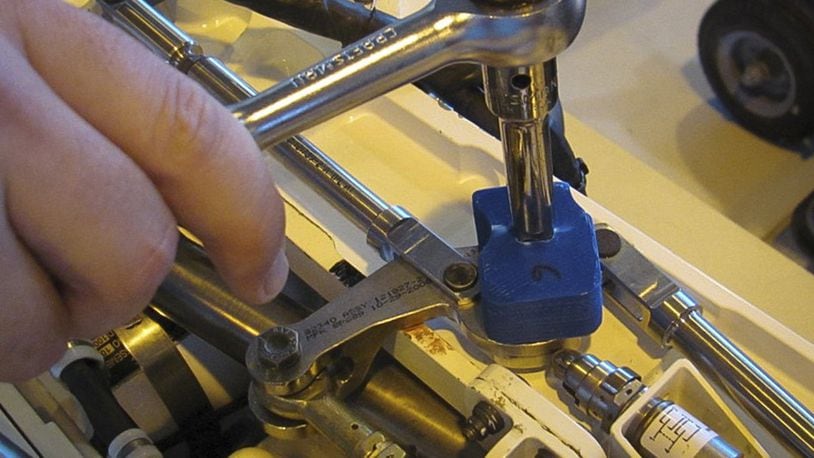In early 2017, the Program Office began integration of a safety indicator on the F-22 missile ejection system. The indicator provides visual safety stand-off verification for the maintainers, ensuring the equipment is safe for maintenance.
Incorporating the indicator created new maintenance challenges for the armament technicians when locking and unlocking the missile ejector system prior to maintenance. Master Sgt. Robert Petty, an integrated logistics support manager, embedded in the F-22 Program Office, recognized an opportunity to mitigate the newly created challenges.
“This is exactly the kind of innovative thinking that we really need in our Air Force right now,” said Brig. Gen. Michael Schmidt, program executive officer for Fighters and Bombers, Air Force Life Cycle Management Center, Air Force Materiel Command. “Master Sgt. Petty clearly has that ‘yes, if” not ‘no, because’ attitude and it’s contagious! I’m not only seeing it in the F-22 and at the RDIF, but amongst all of our Fighter/Bomber teammates.”
Leveraging his maintenance background, Petty conceptualized a specialized lock and unlock tool, greatly reducing the time and physical burden on the armament technicians. His design would attach to existing socket wrenches already found in a maintenance unit’s toolkit.
Petty brought the concept to the RDIF lead, Alan Brookshire, to help take the design from concept to reality. Brookshire and his team jumped at the opportunity to support F-22 maintainers while demonstrating the RDIF’s ability to take a concept through design, manufacturing and delivery.
In less than 48 hours after the initial meeting, the RDIF team was able to design and 3D print a plastic proof-of-concept to support initial fit checks and suitability assessments.
Over the next month, and a few design iterations, Petty and the RDIF team completed a fully functioning aluminum prototype. With the prototype in hand, Petty was able to quick-turn final verification and validation testing of the lock and unlock tool on an F-22 missile eject launcher.
After final design modifications, the RDIF team quickly awarded a production contract. The team, including RDIF CNI Aviation LLC employees, produced 180 toolsets for the F-22 fleet while balancing numerous other projects.
Brookshire also reached out to local companies to support this effort. A Dayton-based company, Electro-Polish Co. Inc., hard anodized the entire order in two days, increasing tool durability. Laser Wolf Engraving in West Carrollton engraved each tool with an identification number and finished all kits in one day.
All of the design, manufacturing and kit production was done in-house at the RDIF or in the local area, greatly expediting the schedule while keeping costs to a minimum. From contract award to fleet delivery, the effort was completed seven months ahead of contract deadline and for $5,800, saving the government and taxpayer more than $370,000 in costs.
Organizations within Air Force Materiel Command and local business were able to partner to support our warfighters. Petty, Brookshire, the RDIF team and the local businesses came together to solve a problem, enabling the installation of a critical safety indicator. Their collaborative effort helped to ensure maintainer safety while executing the F-22 air superiority mission.
About the Author
